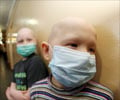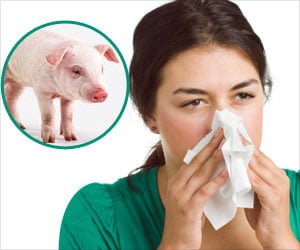August 10, 2010, was a red letter day in world history as it was on this day that the WHO declared that the 2009 influenza A (H1N1) pandemic had come to an end.
It so turned out that the virus which struck fear globally was a lot less potent than what was feared.Several instances of H1N1 pandemics have been recorded-the most severe being the one that emerged in 1918 which killed an estimated 20-40 million people worldwide.
Test by fire
The 2009 H1N1 viral pandemic proved to be a veiled boon in that it allowed the world countries to test their public health preparedness and their ability to counter the influenza pandemic.
A close look has revealed that most of the nations, including the United States, lacked the ability to develop, produce, and distribute a new vaccine in time to cater to the demands of a fast-moving pandemic.
The current pandemic has also reinforced the need for more investments and greater infrastructure to abet the production and distribution of vaccines.
Why vaccine?
If therefore, adequate numbers of people are vaccinated ontime, any epidemic can be slowed and eventually arrested.
Conventional Wisdom vs Reality
It was in March 2009 that the new H1N1 influenza first entered the scene. Around this time it was largely believed that Southeast Asia would be the place of origin of the next pandemic strain and that there would be adequate time for the West to develop a vaccine to counter the influenza.
This conventional wisdom failed in effect. Although safe and effective vaccine was produced in a ‘jiffy,’ the public were deprived until December 2009. But by this time the flu pandemic had reached its peak and even begun to decline and there was hardly any public demand for the vaccine.
This resulted in pharmaceuticals being stranded with 70 million unused doses of H1N1 vaccine.
What Went Wrong
There is a possibility that more people would have agreed to get vaccinated if the pandemic had been more severe.
In the USA only 20% of adults and less than half of health care workers were vaccinated against H1N1 virus despite the pandemic and a never-seen-before public education campaign.
It was thought that the uptake of pandemic vaccine would have escalated, had shipments reached on time and the delivery to public was quicker. It turned out that this was not completely true as almost 20% of adults said they did not want to getvaccinated, even if the pandemic was severe. This unwillingness or willingness could be tracked to a past experience with being vaccinated. Those who had been vaccinated earlier in life were more willing to do so (4 times more) compared to those who had never been vaccinated.
To add to this there was are a small anti-vaccine groups who vociferously raised concern against the vaccine as they believed that it could cause several illnesses, including autism. This may not completely deter people from being vaccinated but their effect on public consciousness cannot be completely ignored.
Creating Awareness
Accelerating vaccine production alone may be of little help in countering future pandemic if more people are unwilling to be vaccinated.
It is therefore important to match the increased supply with increased demand and this needs to be done earlier during the tenure of the pandemic. This seems to be more challenging than the technical or scientific demands.
The real challenge lies in convincing people about the need of the vaccine as a step towards disease control and public health preparedness.
Recommendations
The Advisory Committee on Immunization Practices (ACIP) recommends that everyone 6 months of age or older is annually vaccinated for H1N1. The only exceptions are those with severe allergy to the vaccine.
This is based on two core facts –
• new influenza viral strains can cause severe illness in low-risk people
• Vaccinating several healthy people protects even those who are highly vulnerable to influenza
Conclusion
Biomedical and technological advances, such as vaccines, must be safely and effectively used to enhance public health.
But, towards this end, it is also important to understand and accept the factors that influence public opinion.
It then goes without saying that a more balanced approach is required to counter any future pandemic onslaught. We may not always be as lucky as we were this time!
Reference:
Katherine M. Harris, Ph.D., Jürgen Maurer, Ph.D., and Arthur L. Kellermann, M.D., M.P.H.
November 24, 2010,NEJM
Influenza Vaccine — Safe, Effective, and Mistrusted
Source-Medindia











